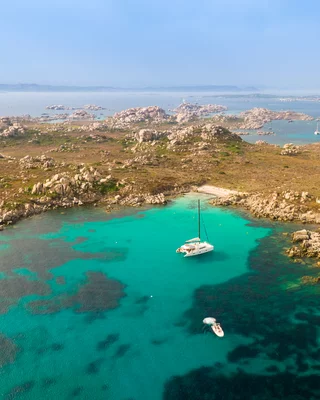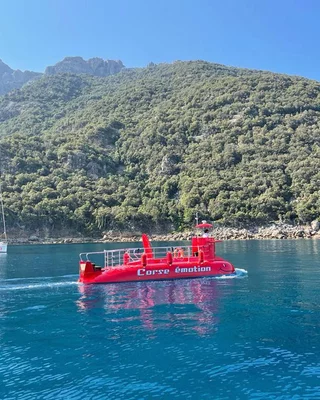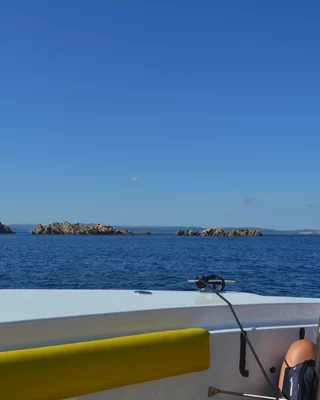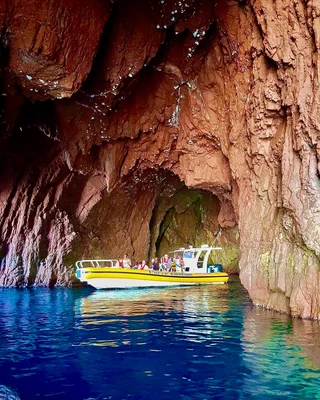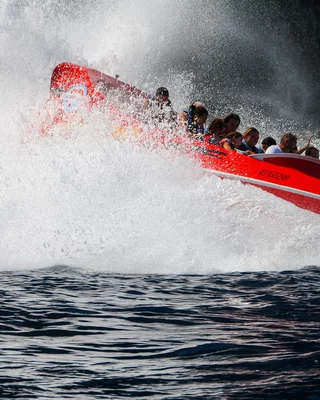Corsica's cetaceans

Looking for a vacation that's both fun and educational? Marine wildlife watching off the coast of Corsica is a unique opportunity to discover cetaceans and learn a little more about these fascinating animals. Plan your stay in Corsica now and treat yourself to the most beautiful of discoveries at sea!
island of beauty, a veritable playground for cetaceans
What to see
The word cetacean comes from the ancient Greek kêtos, which etymologically means big fish. Fish or cetacean? Here's a simple way to recognize them at a glance: look at the animal's tail. If it swings from left to right, it's a fish; if it swings from top to bottom, it's a cetacean.
If you're lucky, you'll be able to see no less than 8 species of marine mammals in Corsica: the blue and white dolphin, bottlenose dolphin, Risso's dolphin, common dolphin, pilot whale, sperm whale, cuvier whale and the second largest whale in the world, the fin whale! The fauna of the open sea is not limited to cetaceans: you may also come across mobula rays or even a blue-skinned shark. Risso's dolphins generally travel in groups of 5 to 20 individuals and communicate a great deal with each other! Have you ever seen one? The sperm whale is a record-breaking diver, capable of remaining fully immersed for up to 2 hours and descending to depths of over 3,000 m. The bottlenose dolphin is the best-known cetacean, measuring 2.5 m to 3.5 m and weighing 300 kg. Its lifespan is estimated at forty years.
When to come?
Any season, spring, summer or autumn. However, you'll have to rely heavily on luck and chance, as no one can guarantee that you'll see them on your outing. Nature decides! Winter is the season when the fewest cetaceans are seen on the coast, as some migrate to warmer waters, food is scarcer and weather conditions make observation more difficult.
Dolphin and whale watching on a cruise
How to go about it Our tips.
Encounters with dolphins in Corsica are a frequent occurrence for yachtsmen every summer. Although dolphins can be sociable with humans, we would like to remind you that these are wild animals and that you should be cautious and respectful, as our interactions can harm their activities (socialization of young, hunting, reproduction...). For this reason, the Pelagos Sanctuary has established rules to ensure optimal cohabitation when you're at sea: sail parallel to the animal's path, don't approach it from behind or from the front, maintain a minimum distance of 300 meters around cetaceans, and keep your boat's speed in line with that of the slowest animal. If they join the boat voluntarily, passengers must not try to touch them, bathe with them or feed them, and above all must not pursue them if they decide to move away.
To fully enjoy the most beautiful things nature has to offer, let's respect it!
Where to observe them?
Looking for marine mammals is just as interesting as watching them, and sometimes involves the discovery of spectacular marine species. It's an opportunity to be both an actor and a spectator. A sea excursion that will show you the sea in a new light, beyond the stereotypes. Below are a few routes to Corsica's cetacean playground:
- Between Ajaccio and Scandola
- Off the coast of Porto-Vecchio
- In the Scandola nature reserve (between Calvi and Piana)
- In the Bouches de Bonifacio
- Cap Corse and the Agriate desert
- Gulf of Valinco
Corsicatours, based in Porto-Vecchio, has many secrets for you!
Pelagos sanctuary: key points to remember
The Pelagos sanctuary is the first Mediterranean cross-border zone created to protect marine mammals. Its governance is shared by France, Italy and the Principality of Monaco. Its 87,500 km² territory extends beyond the coastal zone of the three countries, making it one of the greatest conservation challenges ever launched in the Mediterranean.
Species present in the sanctuary include fin whales, sperm whales, Cuvier's beaked whales, pilot whales, Risso's dolphins, bottlenose dolphins, common dolphins, striped dolphins and monk seals.
The main threats to the habitat include possible cetacean collisions with boats in the area, pollution and overfishing. 300 kgs is the amount of waste per km² in the Mediterranean, three times more than in 1990! Every year, more than 25,000 tonnes of sunscreen are released into the oceans, where they are absorbed by coral reefs and marine animals such as cetaceans, disrupting their reproduction. When buying a cream, opt for a product with the "skin protect, ocean respect" label to limit your environmental impact. Let's reduce and sort our waste to save the marine ecosystem!
Beware of noise pollution (underwater sound waves are transmitted 5 times faster than in the air): off the coast of Corsica, marine animals are fleeing more and more each year from the human activity that is disrupting their equilibrium. The reduction in maritime traffic linked to containment has resulted in a low noise level at sea, similar to that of 40 years ago.

Looking for a great vacation in Corsica? Treat yourself to the most beautiful of journeys with Corsicatours! Discover our different catamaran cruises and get inspired for your next tailor-made tour. A vast choice of accommodation awaits you, and don't hesitate to book early to take advantage of numerous discounts!
